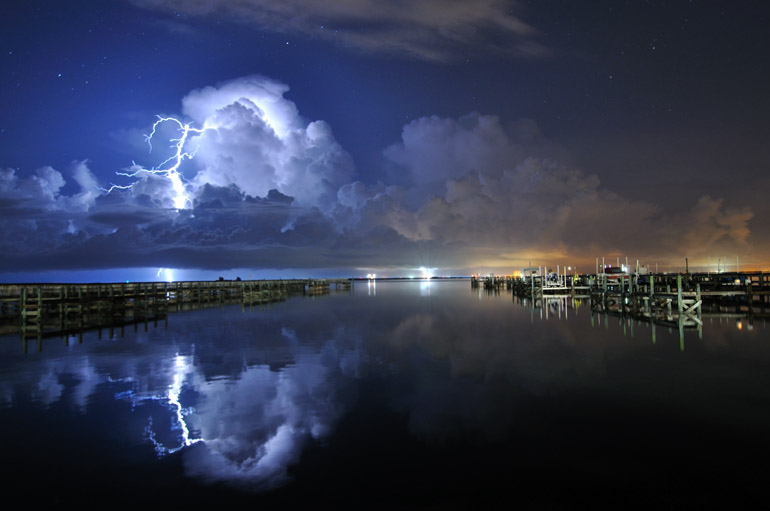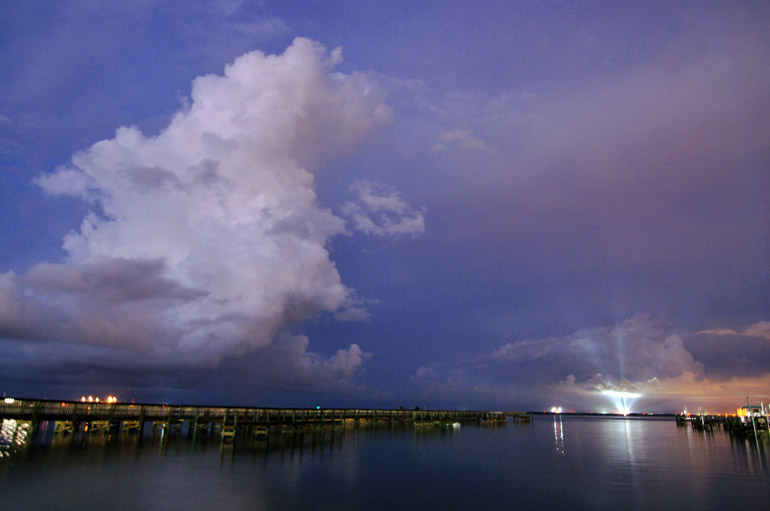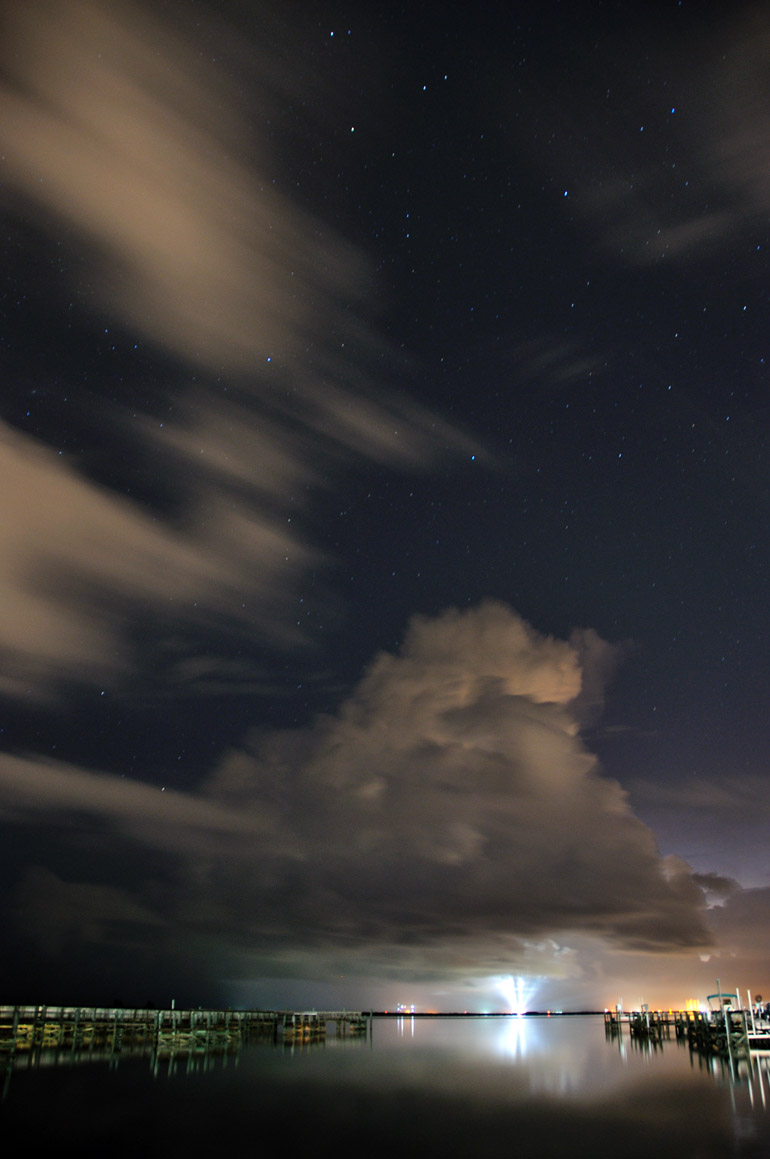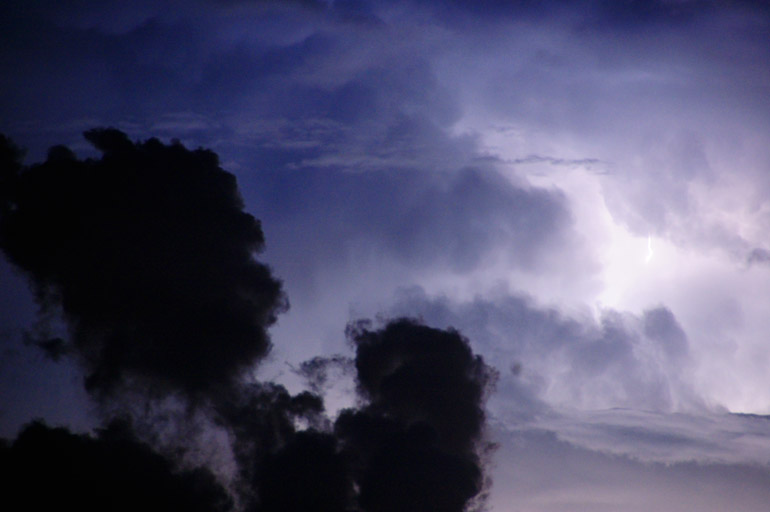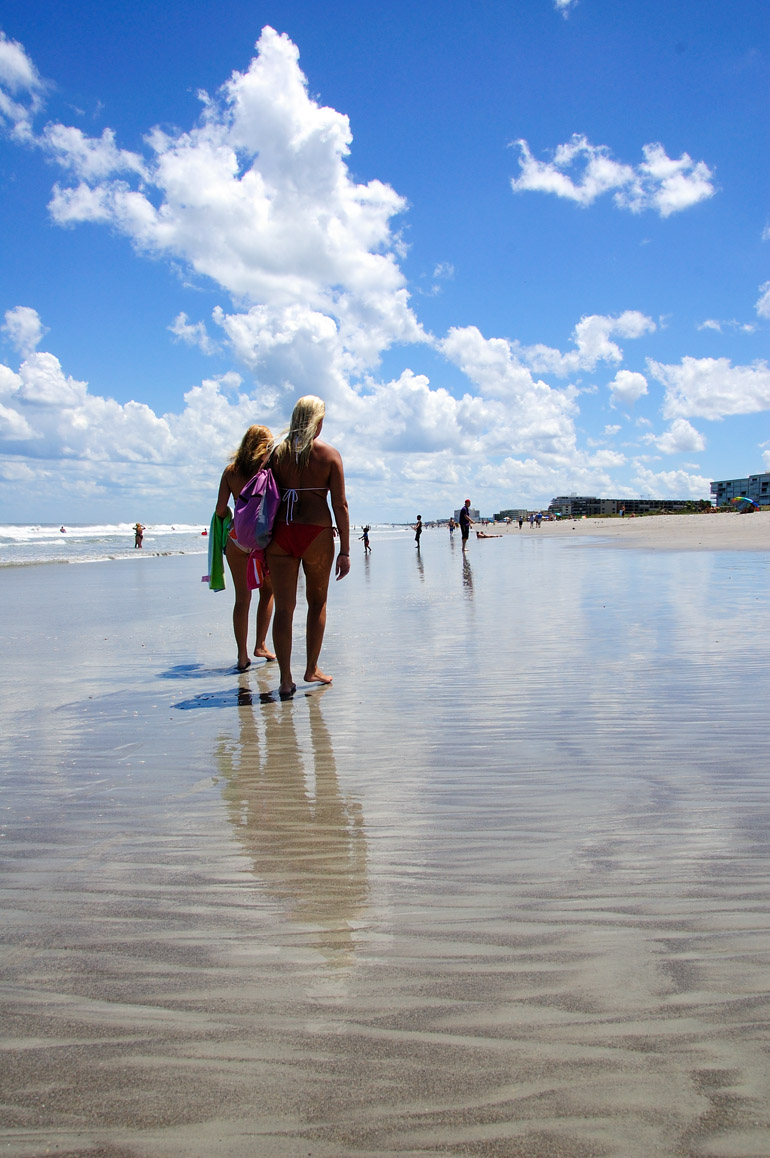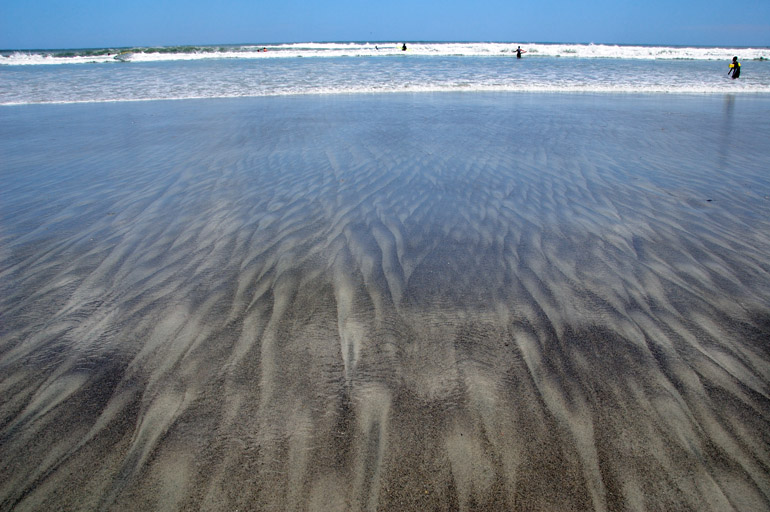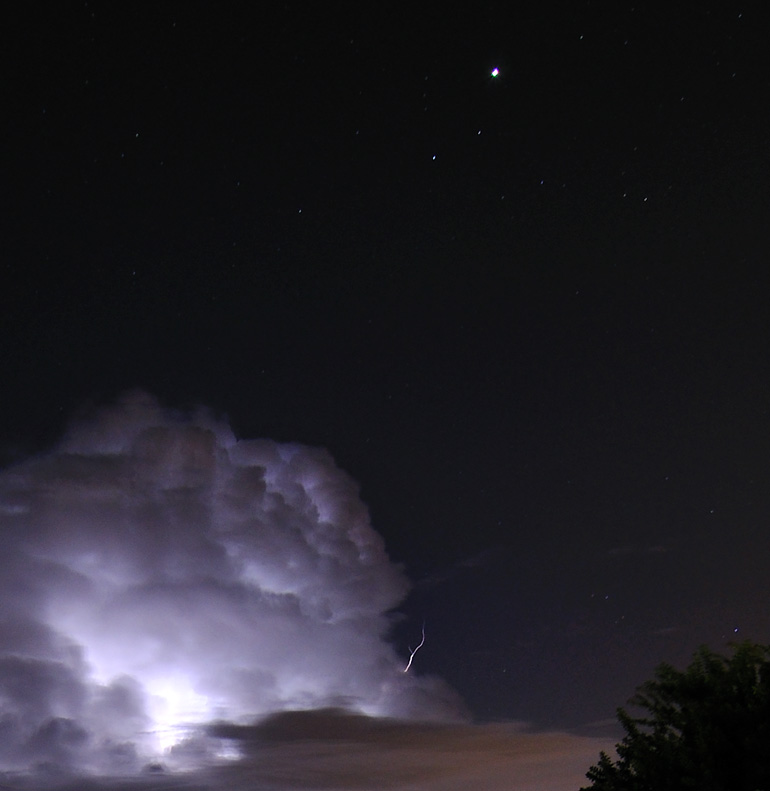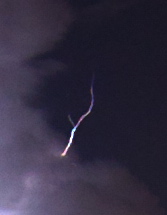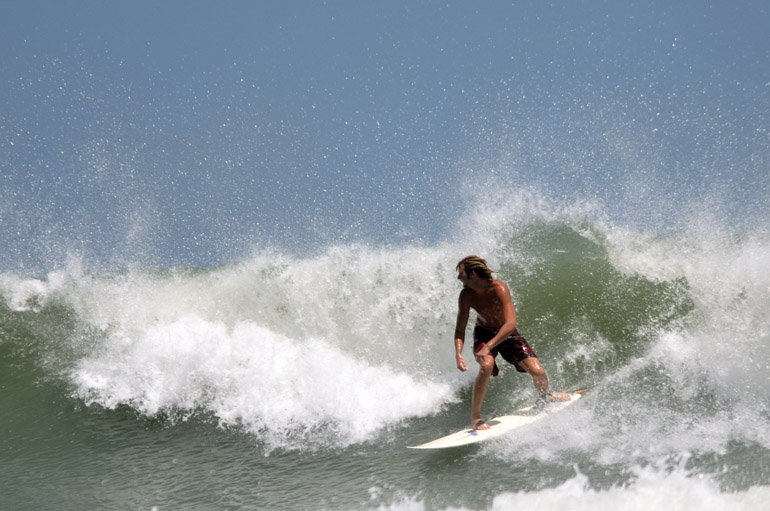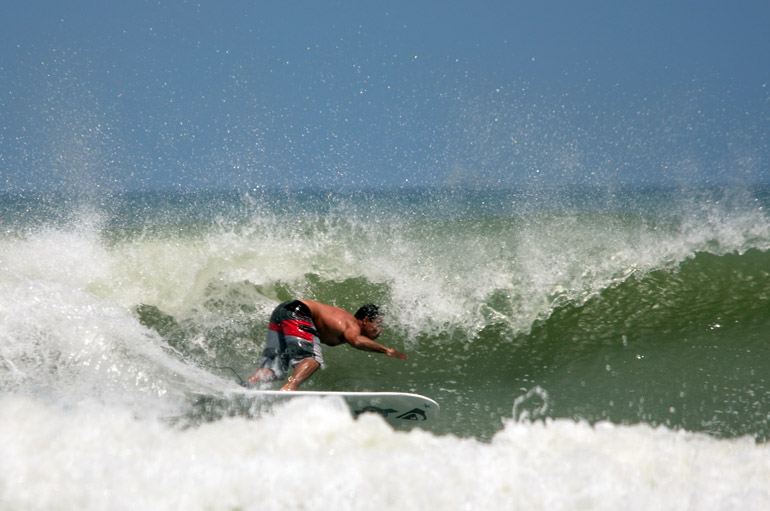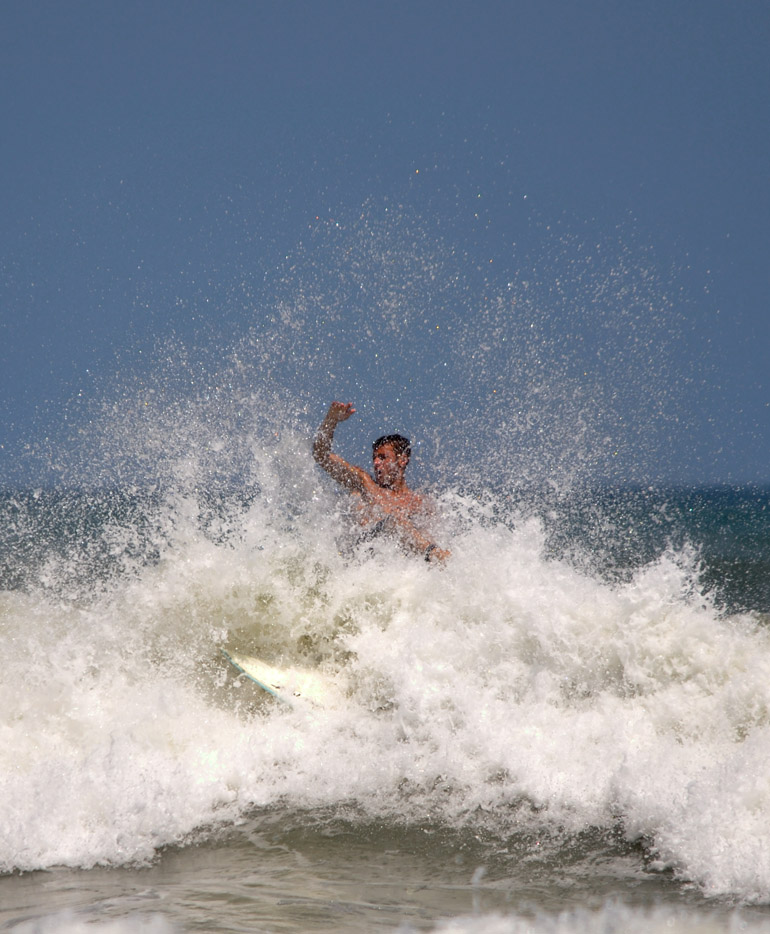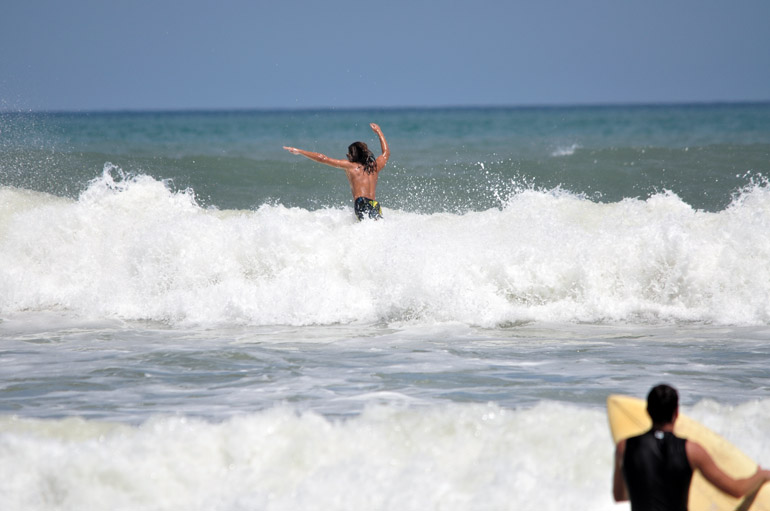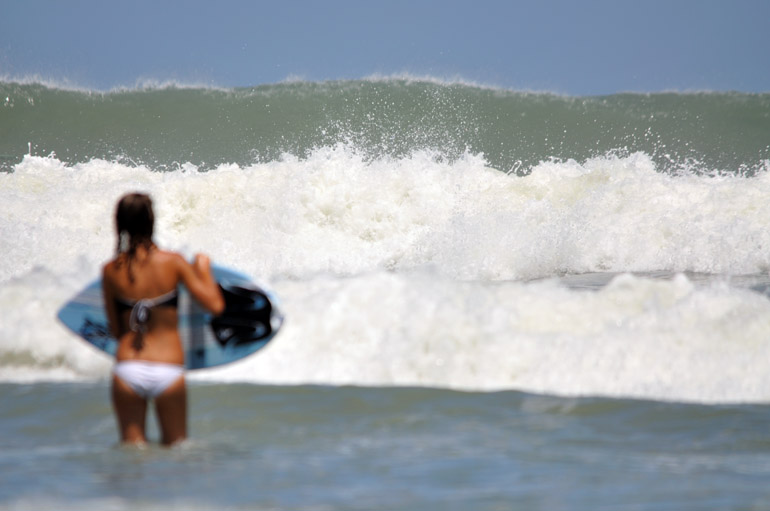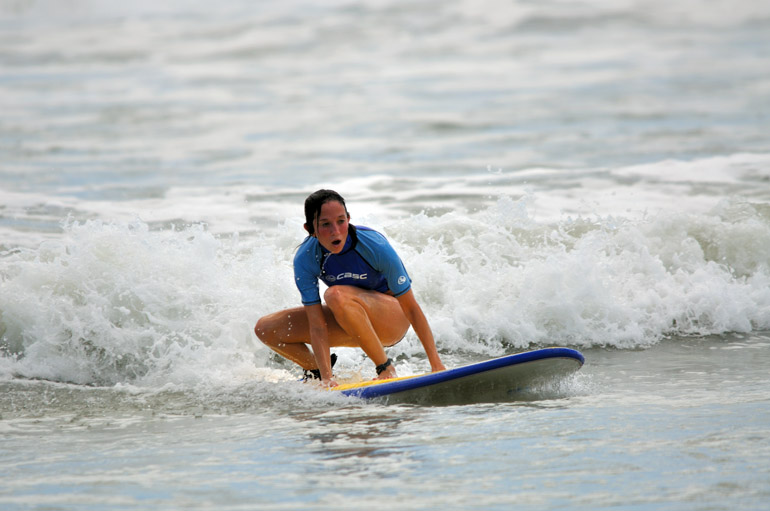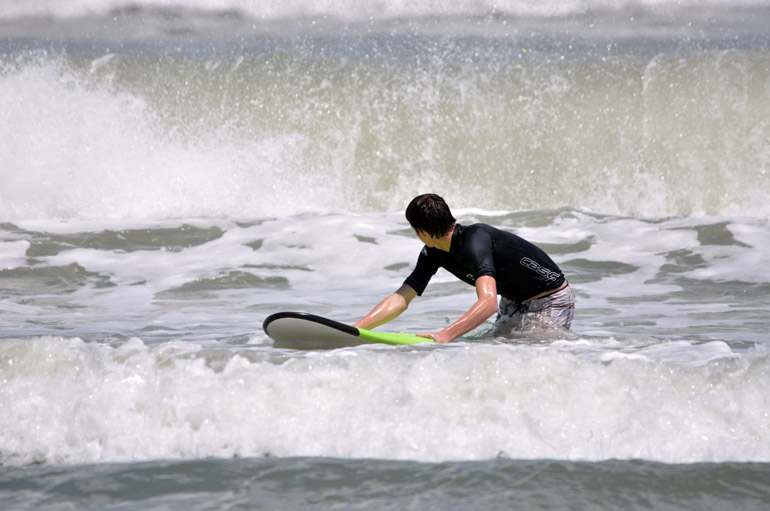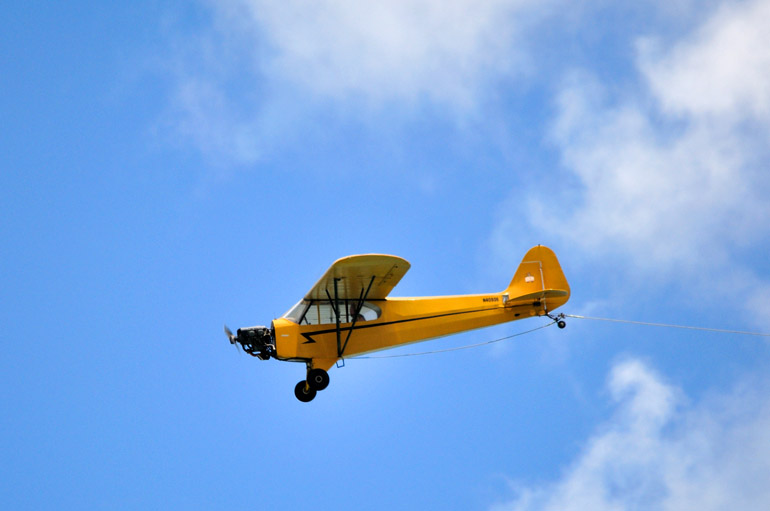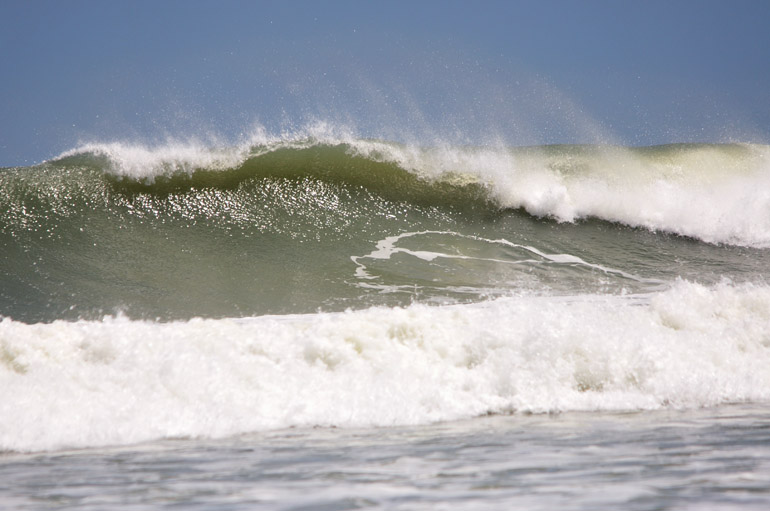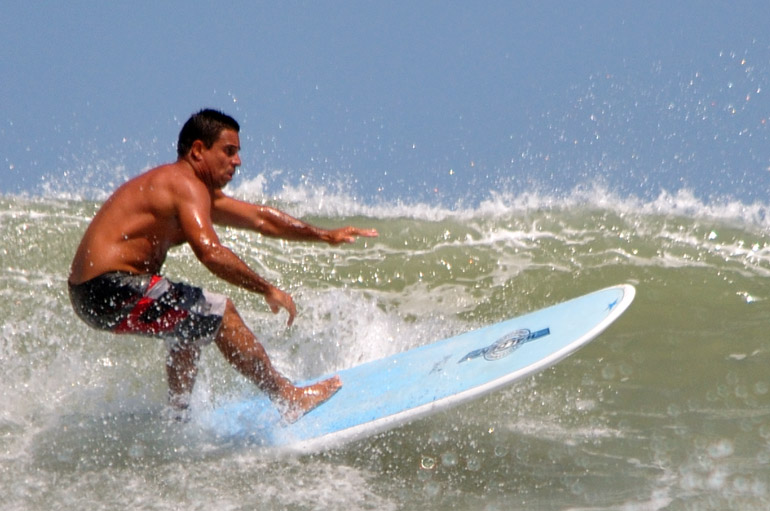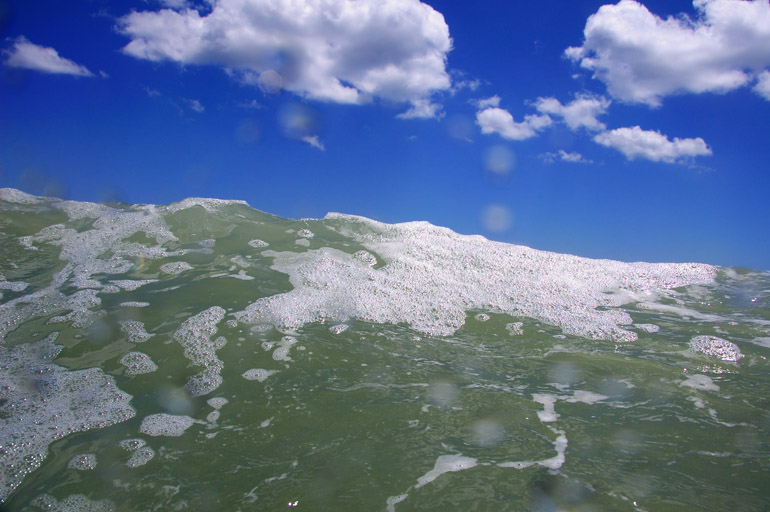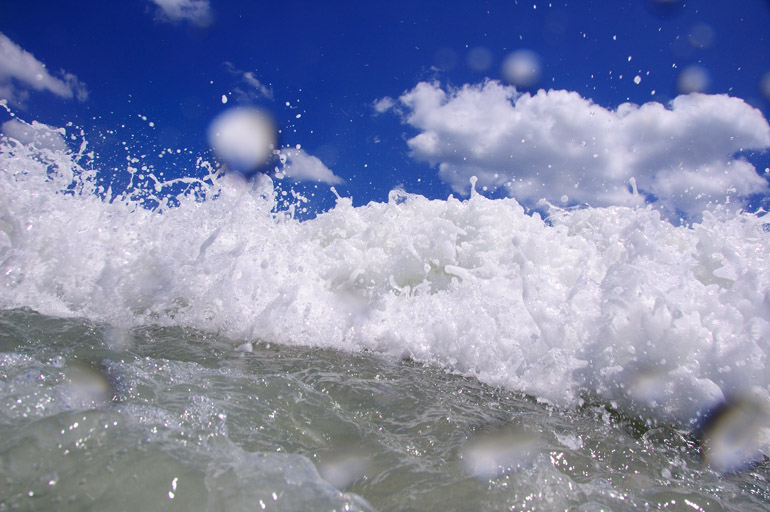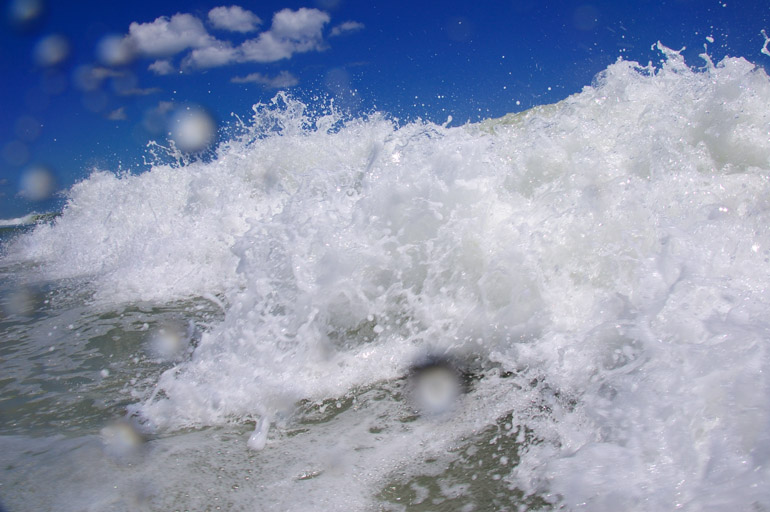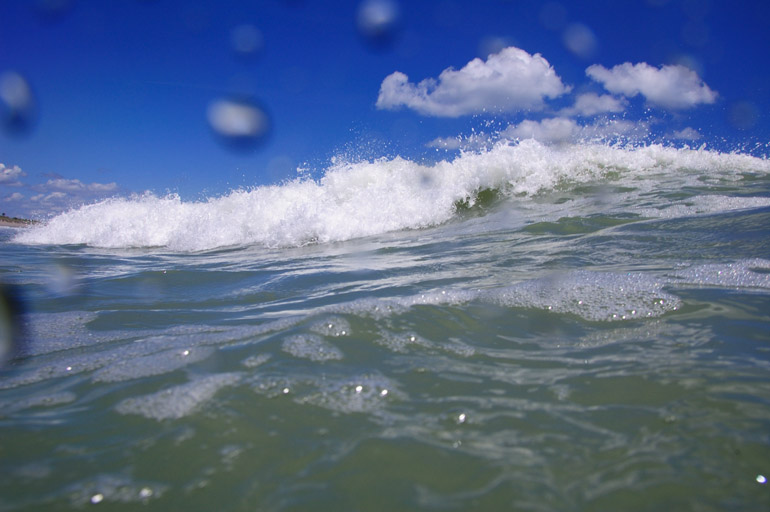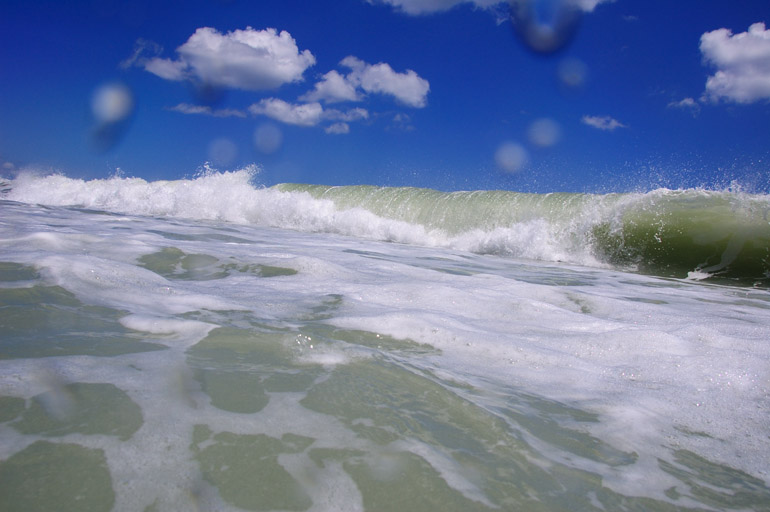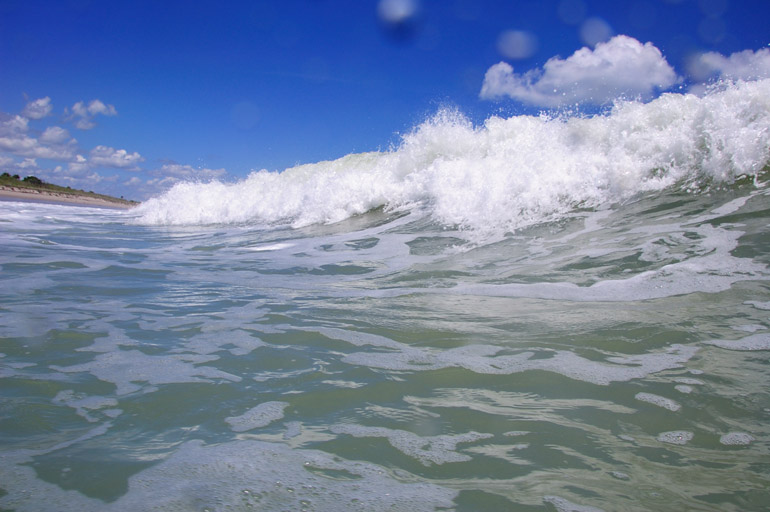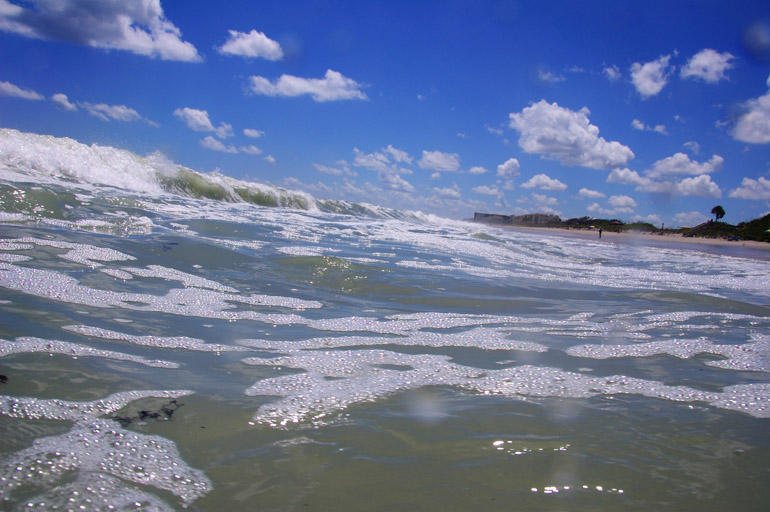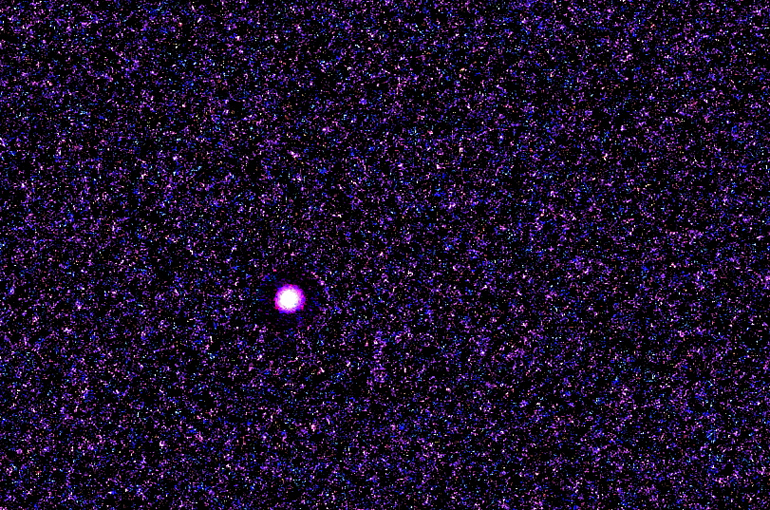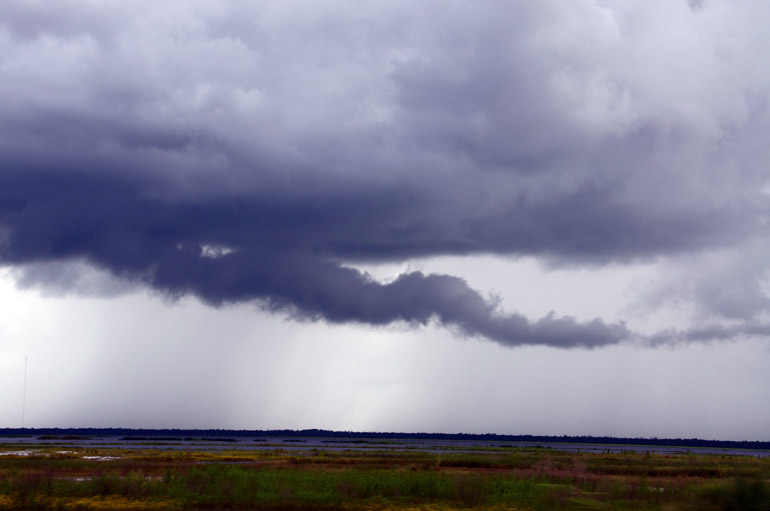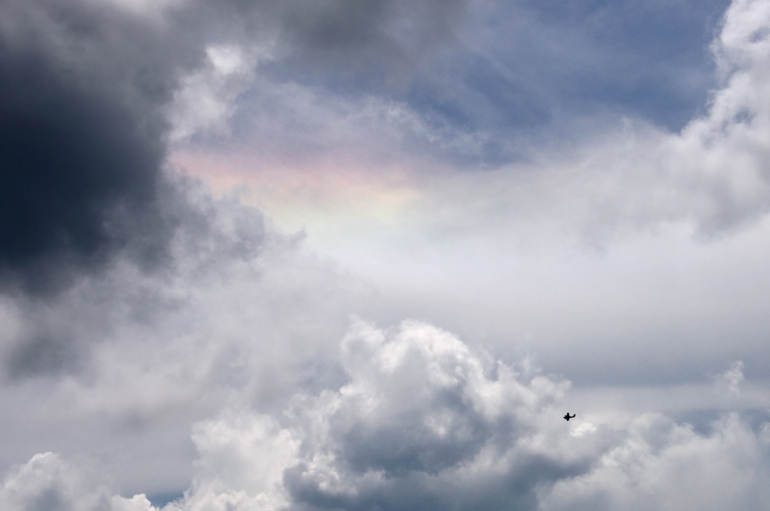Once again, I endeavored to watch a space shuttle launch during my weekend, and once again, I was thwarted by poor weather. Lightning in the area of launch pad 39A at Kennedy Space Center prompted NASA to postpone Discovery's launch from 1:36 a.m. Tuesday to 1:10 a.m. Wednesday. Since about 6:30 p.m. Monday, I watched from Titusville as the weather above Cape Canaveral evolved. The scrub was announced just before 1:30 a.m. Above is the biggest bolt I saw all night. I was lucky to capture it. Viewed from Titusville, most of the lightning was contained within the clouds or obstructed by precipitation.
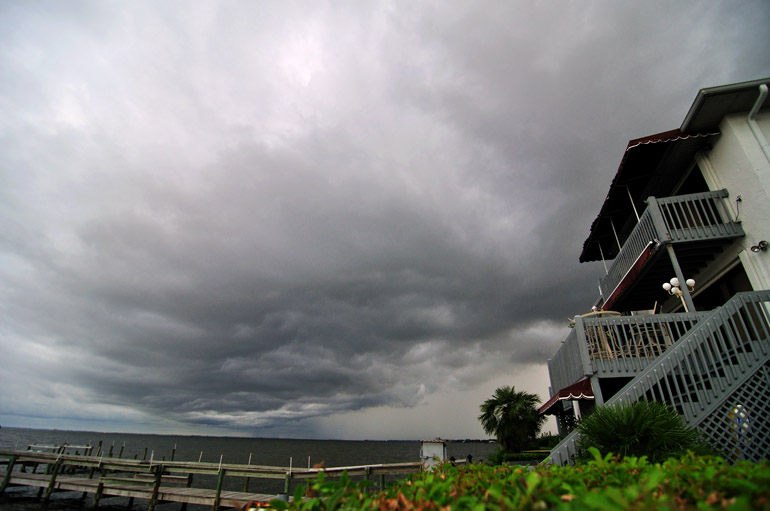
A storm before sunset approached Space View Park, where I was set up about 12 miles across the Banana and Indian rivers from the launch pad. I had my fingers crossed that it wouldn't rain. My camera equipment was spread out across a 15-foot swath in front of the Indian River. I was hogging space for myself and two family members who were to arrive later. Luckily, none of the other spectators had a problem with it.

Ah, but I was not THAT lucky. In this photo in the parking lot of the park, you can see faint bands of rain as they approach. Soon after this, it poured for a good 30 minutes. I used my umbrella to cover my camera equipment and used my camping chair as an umbrella. I can't imagine how stupid I must have looked as the chair's legs stuck high into the air in the middle of a thunderstorm, as I hunkered underneath it. Eventually, I just gave up because the rain was soaking through. After the scrub, I pulled out my wallet to pay for a soda, and the dollar bills were limp and soggy as I handed them to the CVS cashier. I myself was soaked for hours. Heck, I'm still soaked as I write this. At 6 a.m.
The rain finally stopped as the sun went down. At this point, the strobe lights of pad 39A already were shining brightly, as the purples, pinks and blues appeared in the eastern sky above the space center.
Storm cloud after storm cloud moved through. The flow appeared to be mostly from south to north, so I thought that if more thunderstorms formed over the Atlantic Ocean, they simply would move north without coming near the space center. Ah, but nothing is simple when it comes to Florida weather.
After the sun went down, things were looking up. The skies started to clear, and the stars came out.
As I talked with two fellow photographers - one local from Brevard County, one South Floridian from the Miami area - we noticed some lightning well offshore. But as we listened to NASA's launch control announcers - from whom a feed is blasted on speakers at Space View Park - weather didn't seem to be a concern for the launch: Forecasters still were saying there was an 80 percent change of favorable conditions.
But storms kept building - something NASA wasn't expecting. Lightning was popping up all around, and the clouds were billowing higher, two conditions that are unacceptable for a launch. They also appeared to be moving closer. I liked the contrast in this photo.
NASA sent its shuttle training aircraft into the skies to assess the weather conditions over Kennedy Space Center. It lifted off KSC's airstrip with a roar. In this frame, the STA is seen as a colorful streak above the clouds. Soon after this, the lights from the launch pad dimmed, and the tower was no longer clearly visible. That meant one thing: It was raining hard over there.
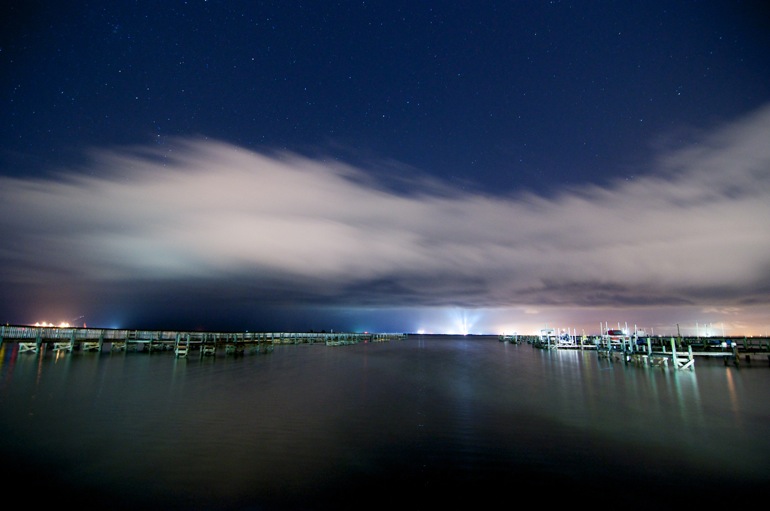
The crowd applauded and whooped as the launch announcer said the weather was trending in the right direction. But I knew they were just getting their hopes up. I still saw lightning in the area, though it wasn't as frequent as it was earlier. Still, the wannabe spectators prepared for rain as this shelf cloud started moving westward - right for us - and the wind started blowing hard after a relatively calm night. But the wind was dry, and I no longer saw precipitation between Titusville and the space center: It appeared as though the storm had rained itself out. Thankfully, I would not get wet again (though I was still wet from the first storm).
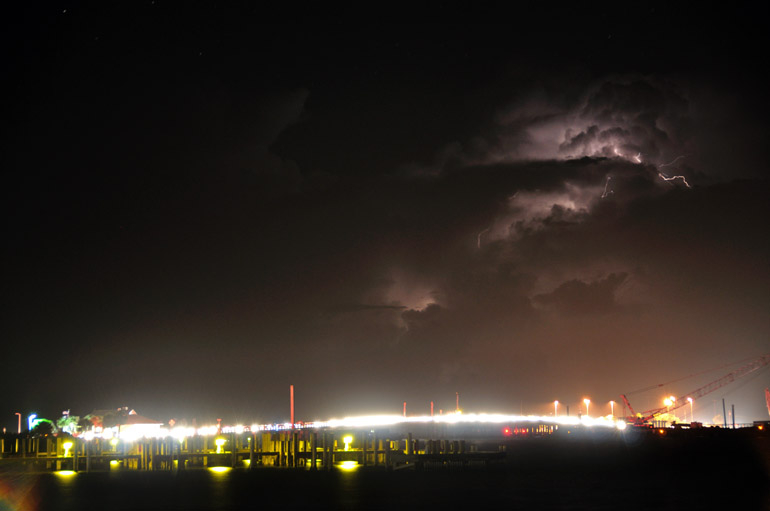
The skies were clearing, but it was too late. There wasn't enough time for the anvil clouds to clear the region. After the launch was scrubbed, visitors who had been at KSC began to file in their cars over the A. Max Brewer Bridge, which connects Titusville to Merritt Island. I decided to let the roads clear before I hit the highway myself. In the meantime, I caught a little lightning above all that traffic.
Just in case you wanted to inspect that bolt a little more closely.
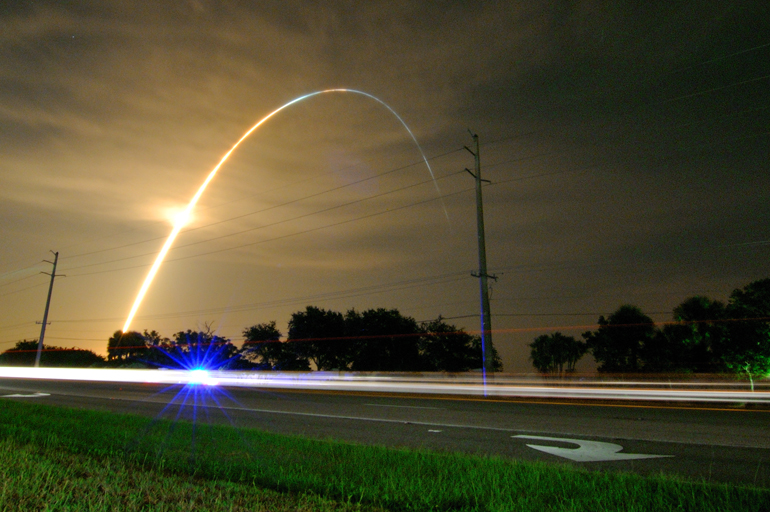

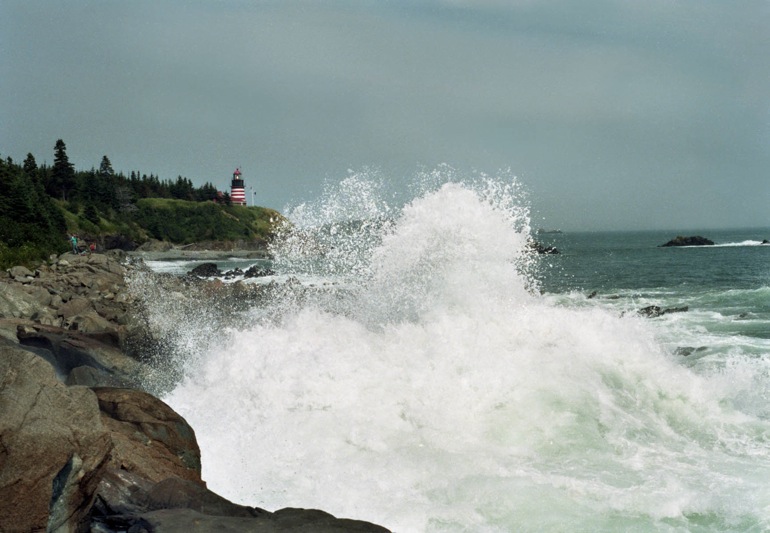
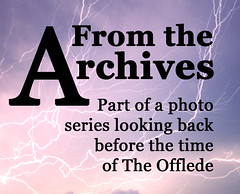 In 1996, Hurricane Edouard, which at the time was an extratropical system, paralleled Maine's shoreline, sending high surf crashing into the coastal regions, accentuating their photogenic nature. Hurricane Bill's
In 1996, Hurricane Edouard, which at the time was an extratropical system, paralleled Maine's shoreline, sending high surf crashing into the coastal regions, accentuating their photogenic nature. Hurricane Bill's 